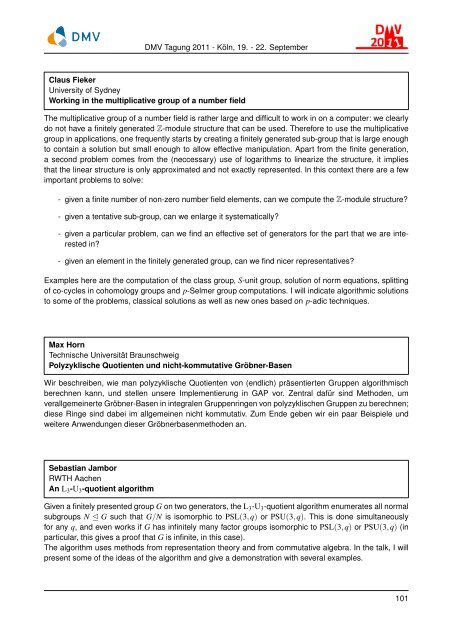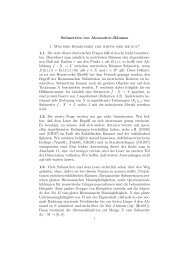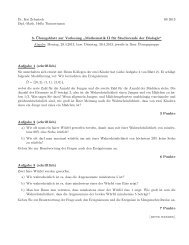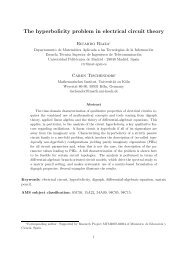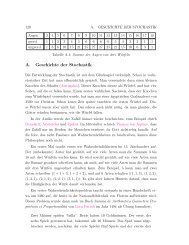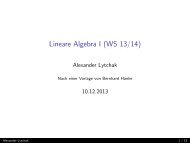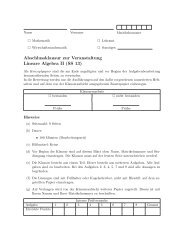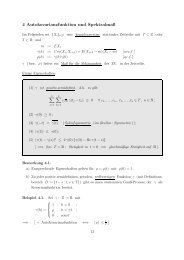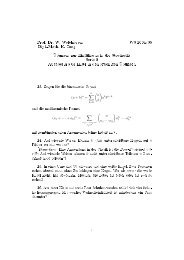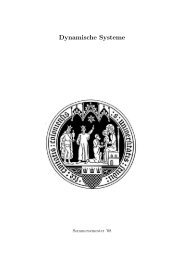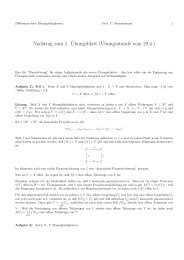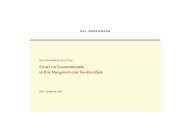Inhaltsverzeichnis - Mathematisches Institut der Universität zu Köln
Inhaltsverzeichnis - Mathematisches Institut der Universität zu Köln
Inhaltsverzeichnis - Mathematisches Institut der Universität zu Köln
Create successful ePaper yourself
Turn your PDF publications into a flip-book with our unique Google optimized e-Paper software.
DMV Tagung 2011 - <strong>Köln</strong>, 19. - 22. September<br />
Claus Fieker<br />
University of Sydney<br />
Working in the multiplicative group of a number field<br />
The multiplicative group of a number field is rather large and difficult to work in on a computer: we clearly<br />
do not have a finitely generated Z-module structure that can be used. Therefore to use the multiplicative<br />
group in applications, one frequently starts by creating a finitely generated sub-group that is large enough<br />
to contain a solution but small enough to allow effective manipulation. Apart from the finite generation,<br />
a second problem comes from the (neccessary) use of logarithms to linearize the structure, it implies<br />
that the linear structure is only approximated and not exactly represented. In this context there are a few<br />
important problems to solve:<br />
- given a finite number of non-zero number field elements, can we compute the Z-module structure?<br />
- given a tentative sub-group, can we enlarge it systematically?<br />
- given a particular problem, can we find an effective set of generators for the part that we are interested<br />
in?<br />
- given an element in the finitely generated group, can we find nicer representatives?<br />
Examples here are the computation of the class group, S-unit group, solution of norm equations, splitting<br />
of co-cycles in cohomology groups and p-Selmer group computations. I will indicate algorithmic solutions<br />
to some of the problems, classical solutions as well as new ones based on p-adic techniques.<br />
Max Horn<br />
Technische <strong>Universität</strong> Braunschweig<br />
Polyzyklische Quotienten und nicht-kommutative Gröbner-Basen<br />
Wir beschreiben, wie man polyzyklische Quotienten von (endlich) präsentierten Gruppen algorithmisch<br />
berechnen kann, und stellen unsere Implementierung in GAP vor. Zentral dafür sind Methoden, um<br />
verallgemeinerte Gröbner-Basen in integralen Gruppenringen von polyzyklischen Gruppen <strong>zu</strong> berechnen;<br />
diese Ringe sind dabei im allgemeinen nicht kommutativ. Zum Ende geben wir ein paar Beispiele und<br />
weitere Anwendungen dieser Gröbnerbasenmethoden an.<br />
Sebastian Jambor<br />
RWTH Aachen<br />
An L3-U3-quotient algorithm<br />
Given a finitely presented group G on two generators, the L3-U3-quotient algorithm enumerates all normal<br />
subgroups N � G such that G/N is isomorphic to PSL(3,q) or PSU(3,q). This is done simultaneously<br />
for any q, and even works if G has infinitely many factor groups isomorphic to PSL(3,q) or PSU(3,q) (in<br />
particular, this gives a proof that G is infinite, in this case).<br />
The algorithm uses methods from representation theory and from commutative algebra. In the talk, I will<br />
present some of the ideas of the algorithm and give a demonstration with several examples.<br />
101


